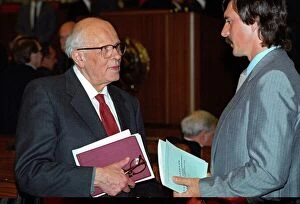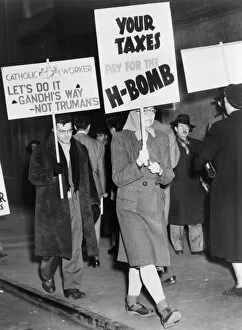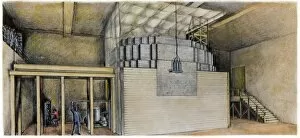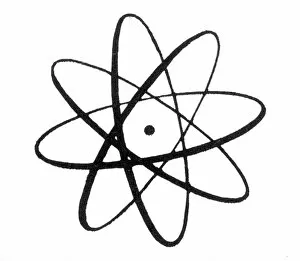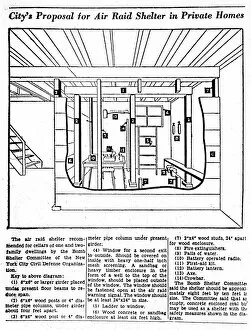H Bomb Collection
The H-bomb, also known as the hydrogen bomb, has been a topic of great significance and controversy throughout history
For sale as Licensed Images
Choose your image, Select your licence and Download the media
The H-bomb, also known as the hydrogen bomb, has been a topic of great significance and controversy throughout history. Developed by Andrei Sakharov, a Russian physicist, it represented a major advancement in nuclear weaponry. The moment of detonation during the second test of Britain's hydrogen bomb was captured in a powerful image - a mushroom cloud rising over the Pacific, showcasing the destructive power unleashed. Members of the press and naval ratings aboard HMS Alert witnessed this awe-inspiring event from 35 miles offshore of Malden. It served as a stark reminder of humanity's ability to create weapons capable of unimaginable devastation. In an American cartoon by D. R. Fitzpatrick from 1945 titled "In the Lab of Human Affairs, " two major and contradictory questions facing the world after World War II were depicted: Should we continue down this path towards more destructive weapons or find ways to prevent their use altogether? Nuclear protests became prevalent in 1950 when members of the Catholic Worker Movement picketed against these deadly arms. People recognized that such immense power should not be wielded without caution and restraint. An artist's sketch from 1942 showcased the first self-sustaining nuclear chain reactor - symbolizing both scientific progress and potential danger. Atomic energy held promise for peaceful applications but also posed risks if mishandled or misused. As public awareness grew about nuclear threats, diagrams like one recommended by New York City Civil Defense Organization in 1955 illustrated basement bomb shelters for residential safety. These images highlighted society's fear and desire for protection amidst escalating tensions. Finally, an iconic depiction showed an eye alongside a nuclear explosion - representing how witnessing such destruction could forever change our perspective on life itself. The H-bomb stands as both testament to human ingenuity and folly; its development marked significant milestones in science while raising profound ethical questions about our responsibility with such immense power.

